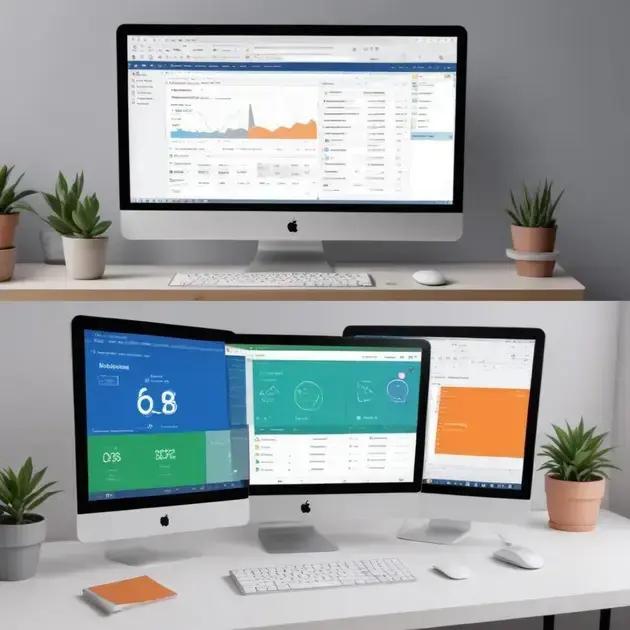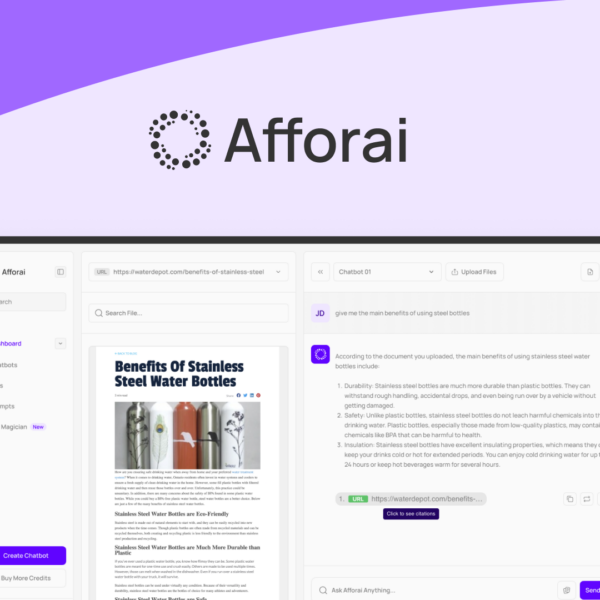Free business software for small businesses can significantly boost productivity and efficiency at no cost. Key options include Trello, Slack, Wave, and Google Workspace, each offering essential features like project management, communication, and collaboration, making them invaluable tools for small business success.
Free business software for small businesses is transforming the way entrepreneurs run their operations. With tight budgets and expansive goals, small business owners need tools that help streamline tasks—and guess what? There’s a wealth of free software options out there that can cater to various business needs. In this article, we’ll dive into some of the best free business software available, highlighting features that can enhance productivity and efficiency.
Top 5 Free Business Software Solutions
Top 5 Free Business Software Solutions can significantly enhance the efficiency of your small business. With various options available, it’s essential to know which ones can effectively meet your needs without straining your budget. Here, we outline some of the best free business software solutions that can help you streamline your operations.
1. Trello
Trello is an excellent project management tool that helps small teams stay organized. By using boards, lists, and cards, you can easily track progress on tasks and projects. Its intuitive design makes it user-friendly, allowing you to collaborate with your team effortlessly.
2. Slack
Slack is a powerful communication tool that connects team members in real-time. It allows for group chats, file sharing, and integrates with other software, thus reducing email clutter and enhancing team collaboration.
3. Wave
For accounting needs, Wave offers free software that helps small businesses manage invoices, receipts, and financial reports. Its user-friendly interface ensures that you can handle your finances effectively.
4. Asana
Asana is another project management tool designed to help teams track their work and manage projects. With features like task assignments and deadlines, it enables everyone to understand their responsibilities clearly.
5. Google Workspace
Google Workspace offers a suite of free tools such as Google Docs, Sheets, and Drive. These tools facilitate collaboration and document management, making it easy for teams to work together remotely.
How Free Software Can Boost Small Business Productivity

How Free Software Can Boost Small Business Productivity lies in its ability to simplify complex processes and enhance team collaboration. By integrating free tools into daily operations, small businesses can significantly improve their overall efficiency, enabling them to focus on growth and innovation.
Streamlining Daily Tasks
Free software like project management and time tracking tools can help small businesses automate routine tasks. This automation reduces the time spent on administrative duties, allowing employees to focus on more critical areas that drive the business forward.
Enhancing Team Collaboration
Communication platforms, such as Slack or Microsoft Teams, provide a space for teams to collaborate effectively. These tools allow for instant messaging, video calls, and file sharing, which fosters better teamwork and improves project outcomes.
Data Management and Analysis
Free tools like Google Sheets or Wave can help small businesses manage data more efficiently. By offering features for data organization and analysis, these tools enable business owners to make informed decisions based on accurate information.
Cost Savings
Utilizing free software reduces overhead costs associated with purchasing expensive software solutions. This financial relief allows small businesses to allocate funds to other critical areas, such as marketing and product development.
Access to Essential Features
Many free software options offer essential features that can compete with paid versions. Small businesses can access tools that help with budgeting, invoicing, and customer relationship management without investing large amounts of money.
Essential Features to Look for in Free Business Software
Essential Features to Look for in Free Business Software are crucial for ensuring that the tools you choose will meet your business needs effectively. Here are several key features that every small business should consider when selecting free software solutions.
User-Friendly Interface
A user-friendly interface is essential for any software. It should be intuitive and easy to navigate, allowing your team to quickly learn how to use it without extensive training.
Integration Capabilities
Look for software that can integrate with the other tools you are already using. This helps streamline processes by allowing different systems to work together seamlessly, saving time and reducing errors.
Collaboration Features
Collaboration is key in a small business environment. Choose software that offers features like task assignments, comments, and real-time updates to enhance teamwork and communication.
Mobile Accessibility
In today’s fast-paced world, having software that can be accessed on mobile devices is essential. This allows your team to work from anywhere, making it easier to stay productive and responsive.
Security Measures
Even when using free software, security should never be overlooked. Ensure that the software provider takes data security seriously by offering features like encryption and regular updates to protect your information.
Comparing Free vs. Paid Business Software

Comparing Free vs. Paid Business Software is necessary for small businesses when deciding what tools can best enhance productivity and efficiency. While both free and paid software have advantages, understanding their differences can help you make informed decisions.
Cost Considerations
The most obvious difference is cost. Free software is, as the name suggests, free to use, which can be a significant advantage for small businesses with limited budgets. Paid software, however, often requires a monthly or annual subscription, but it may offer more features and support.
Features and Capabilities
Free software often comes with basic features that fulfill essential needs. In contrast, paid options usually offer advanced features such as analytics, customization, and integration with other software. These can be crucial for businesses needing specific functionalities.
Customer Support
With paid software, companies typically provide dedicated customer support, which can be a lifesaver if you encounter issues. Free software often has limited support options, such as community forums or email support, which may delay resolution times.
Updates and Security
Paid software generally includes regular updates and enhanced security measures, offering peace of mind for businesses that handle sensitive data. While some free software does receive updates, they can be less frequent, raising concerns about potential vulnerabilities.
Scalability
Paid software often scales better with your business as it grows. It can accommodate more users and advanced features as your needs change, while free software may have limitations on the number of users or functionalities that could hinder growth.
User Reviews: Best Free Business Software for Small Businesses
User Reviews: Best Free Business Software for Small Businesses provide valuable insights into how software performs in real-world situations. Small businesses often rely on user experiences to make informed decisions about the tools they choose. Here are some top-rated free business software options based on user reviews.
1. Trello
Users love Trello for its visual task management system. Its drag-and-drop interface makes organizing projects easy, and many appreciate how quickly their teams adopted it. Reviewers highlight its ability to keep everyone on the same page and provide clarity on project progress.
2. Slack
Slack is praised for improving team communication. Users enjoy the versatility of having channels for different topics, making it easier to manage discussions. Many users report feeling more connected with remote teams and value the file-sharing capabilities.
3. Wave
Wave gets positive feedback for its accounting features. Small business owners find it user-friendly and effective for managing invoices and expenses. Users appreciate having a free tool that covers essential accounting needs without compromising features.
4. Asana
Asana is often highlighted for its project tracking capabilities. Users appreciate the ability to assign tasks and set deadlines, which helps teams stay organized. Many reviews mention the helpful integration options with other tools they already use.
5. Google Workspace
Google Workspace is commended for collaboration features. Users enjoy the ease of sharing documents and working together in real-time. Many consider it an invaluable tool for remote teams, with strong integration across its suite of applications.
Choosing the Right Business Software for Your Needs
In conclusion, selecting the right software is essential for the success of small businesses. Both free and paid options offer unique benefits. Free software can save money and provide necessary features, while paid software often delivers more advanced tools and support.
Understanding the essential features to look for and checking user reviews can help make the decision easier. Tools like Trello, Slack, Wave, and others can optimize operations and improve productivity.
By carefully evaluating your business needs and the software available, you can find the right solution to help your business grow and thrive.
FAQ – Frequently Asked Questions about Free Business Software for Small Businesses
What are the main benefits of using free business software?
Free business software can help save costs while providing essential features to manage your operations effectively. It also allows small businesses to allocate resources to other critical areas.
How can I choose the right free software for my business?
Evaluate your business needs, consider essential features, and read user reviews to determine which free software options will best meet your goals.
Are there limitations to using free software?
Yes, free software often has limited features, support, and scalability compared to paid options, which could impact its usability as your business grows.
Can free software provide sufficient integration with other tools?
Many free software options offer integration capabilities, but the extent of integration may vary. Check compatibility with the tools you already use to ensure seamless operation.
How does user feedback influence my software choice?
User feedback provides insights into real-world experiences with the software, giving you a clearer picture of its usability and performance, which can guide your decision-making process.
What are some popular free software options for small businesses?
Some popular free software options include Trello for project management, Slack for communication, Wave for accounting, and Google Workspace for collaboration.




